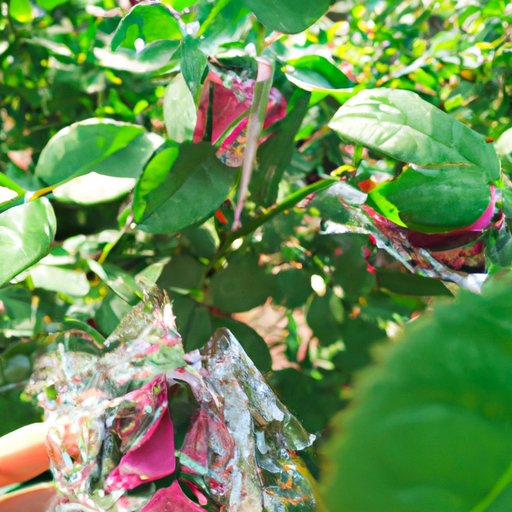
Introduction
Growing roses is a fun and rewarding pastime, and propagating, or reproducing, your favorite roses is a great way to expand your garden or share with friends. In this article, we will explore different methods of rose propagation and how to execute them successfully.
Propagating Roses from Cuttings
Taking cuttings from your favorite roses is a common and easy way to propagate them. Cuttings are branches that are removed from the parent plant and placed in soil to grow roots.
The best time to take cuttings is in the early summer when the plant is flowering. Choose a healthy branch that has not yet flowered and cut it just below the leaf node, which is where the leaves meet the stem. Make sure the cutting is about 6 inches long and has at least three leaves.
Next, remove the leaves from the bottom half of the stem and dip the cut end in rooting hormone powder. This powder stimulates root growth and helps the cutting take root faster. Then, plant the cutting in a pot filled with well-draining soil and water it thoroughly.
Place the pot in a warm, bright location out of direct sunlight. Keep the soil moist, but not soggy, and avoid overwatering. After a few weeks, the cutting should start to grow new leaves, which is a sign that it has successfully rooted.
Propagating Roses from Seeds
Growing roses from seed is a bit more challenging than using cuttings, but it’s a rewarding process that can produce unique and beautiful plants. The first step is to collect the seeds. Wait until the rose plant has finished flowering and the hips have formed. The hips are the swollen, bulbous fruit that develops where the flowers were. Once the hips turn red, orange, or brown, cut them off and remove the seeds.
To prepare the seeds for planting, gently rub them with sandpaper or a file to break down the outer layer and help the seeds absorb water. Then, soak the seeds in a bowl of water overnight.
Next, plant the seeds in a pot filled with well-draining soil and water them thoroughly. Cover the pot with plastic wrap to create a mini-greenhouse and place it in a warm, bright location. Keep the soil moist, but not wet, and after a few weeks, the seeds should start to sprout.
Propagating Roses Using Layering
Layering is a simple yet effective technique for propagating roses. It involves bending a stem or branch of the parent plant down to the ground and covering it with soil so that it develops its own roots.
The best time to do this is in the early spring before the plant begins to bloom. Select a healthy, flexible stem or branch and make a small cut halfway through the stem, about 6 inches from the end. Then, bend the cut end down to the ground and cover it with soil, leaving the tip of the stem exposed.
Keep the soil moist and check regularly for roots. After a few weeks, the stem should start to grow small roots. Once the new plant has a good root system, carefully cut it away from the parent plant and transfer it to a new pot or location in your garden.
Propagating Roses From Suckers
Suckers are the growth that appears from the base of the rose plant. While they can be a sign of an unhealthy plant, they can also be used to propagate new roses.
To propagate from suckers, identify a young sucker that has its own set of roots and cut it away from the parent plant with a clean, sharp knife. Then, plant the new sucker in a pot or in the ground, making sure it’s at the same depth it was before. Water it thoroughly and keep the soil moist until it has established itself.
Creative Ways to Propagate Roses
There are many creative ways to propagate roses, such as air layering, grafting, and budding. These techniques involve creating a new plant by joining a piece of one rose plant to the rootstock of another.
Air layering involves wrapping a stem with moist moss and plastic wrap to encourage it to develop roots. Grafting involves joining a piece of one plant to the rootstock of another by making a small cut in each and joining them together. Budding is similar to grafting, but involves inserting a single bud instead of a stem.
While these techniques can be more complex, they can produce unique and interesting plants. If you’re interested in trying one of these techniques, do some research beforehand and make sure you have the necessary equipment and skills.
Conclusion
Propagating roses is a fun and rewarding way to expand your garden or share your favorite plants with others. Whether you choose to take cuttings, grow from seed, use layering, or try one of the more creative methods, the key is to be patient and persistent. With the right preparation and care, you can successfully propagate beautiful and healthy roses.
If you’re interested in learning more about rose propagation or want to explore different varieties to grow, check out your local nursery or gardening center. They can provide helpful tips and advice and help you find the perfect rose for your garden.




